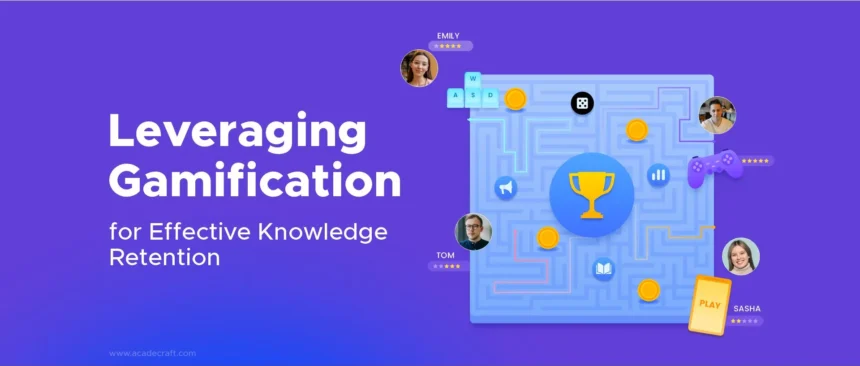Introduction
In today’s digital age, technology has become an integral part of education, transforming traditional teaching methods and enhancing the learning experience for students. One innovative approach that has gained popularity in recent years is gamification, which involves integrating game elements and mechanics into educational activities to motivate students, foster engagement, and improve learning outcomes. In this article, we’ll explore the use of gamification in education, its benefits and challenges, and best practices for implementing gamified learning experiences in the classroom.
Understanding Gamification in Education
Gamification is the process of applying game design principles, mechanics, and elements to non-game contexts, such as education, to motivate and engage participants. In the context of education, gamification involves incorporating elements such as points, badges, levels, challenges, leaderboards, and rewards into learning activities to make them more interactive, immersive, and enjoyable for students.
The goal of gamification in education is to harness the motivational power of games to promote active learning, critical thinking, collaboration, problem-solving, and mastery of academic concepts. By creating a dynamic and interactive learning environment, gamification seeks to increase student engagement, motivation, and retention while making learning more fun and enjoyable.
Benefits of Gamification in Education
Increased Engagement: Gamification makes learning more engaging and interactive by incorporating elements of play, competition, and exploration into educational activities. Students are more likely to participate actively and stay motivated when learning feels like a game.
Improved Motivation: Gamification provides intrinsic and extrinsic rewards, such as points, badges, and achievements, to incentivize students to complete tasks, overcome challenges, and achieve learning goals. The sense of accomplishment and progress motivates students to persist and succeed in their academic pursuits.
Enhanced Learning Outcomes: Gamification encourages active learning, problem-solving, and critical thinking by presenting content in a format that is immersive, interactive, and experiential. Students learn by doing, experimenting, and exploring, leading to deeper understanding and retention of academic concepts.
Personalized Learning: Gamification allows for personalized learning experiences tailored to individual students’ interests, preferences, and learning styles. By offering choice, autonomy, and customization options, gamified learning environments accommodate diverse learners and promote self-directed learning.
Collaborative Learning: Gamification fosters collaboration, teamwork, and social interaction among students by incorporating multiplayer games, group challenges, and cooperative activities into the learning experience. Students collaborate with peers, share knowledge, and solve problems together, leading to a sense of community and camaraderie.
Challenges of Gamification in Education
Implementation Complexity: Designing and implementing gamified learning experiences requires careful planning, coordination, and technical expertise. Educators must integrate game elements seamlessly into the curriculum, align learning objectives with game mechanics, and provide adequate support and resources for implementation.
Overemphasis on Rewards: Excessive use of extrinsic rewards, such as points and badges, can lead to gamification becoming overly transactional and superficial, undermining intrinsic motivation and long-term engagement. Educators must strike a balance between intrinsic and extrinsic rewards to maintain student interest and engagement.
Potential for Distraction: While gamification can enhance engagement and motivation, it also has the potential to distract students and detract from the learning process if not implemented effectively. Educators must ensure that game elements complement and support learning objectives rather than overshadowing or detracting from them.
Accessibility and Equity: Gamification may inadvertently exclude or disadvantage certain groups of students, such as those with disabilities, limited access to technology, or cultural differences. Educators must consider issues of accessibility and equity when designing gamified learning experiences and ensure that all students have equal opportunities to participate and succeed.
Best Practices for Implementing Gamification in Education
Align Game Elements with Learning Objectives: Ensure that game mechanics, such as points, badges, levels, and challenges, are aligned with specific learning objectives and academic standards. Design gamified activities that reinforce key concepts, skills, and competencies relevant to the curriculum.
Provide Clear Instructions and Feedback: Clearly communicate the rules, objectives, and expectations of gamified learning activities to students, and provide timely feedback on their progress and performance. Encourage students to set goals, track their progress, and reflect on their learning experiences.
Foster Collaboration and Competition: Incorporate elements of both collaboration and competition into gamified learning experiences to appeal to different preferences and learning styles. Offer opportunities for students to work together in teams, compete against each other, and earn rewards collectively and individually.
Encourage Exploration and Discovery: Create a sense of exploration and discovery by offering students choices, challenges, and opportunities to explore new concepts and ideas. Design gamified activities that encourage experimentation, problem-solving, and creative thinking, allowing students to learn through trial and error.
Provide Opportunities for Reflection and Improvement: Encourage students to reflect on their learning experiences, identify areas for improvement, and set goals for future growth. Use gamification to promote a growth mindset and resilience by rewarding effort, persistence, and improvement over time.
Conclusion
Gamification holds tremendous potential for transforming education by making learning more engaging, interactive, and enjoyable for students. By leveraging game design principles, mechanics, and elements, educators can create dynamic and immersive learning experiences that motivate students, foster collaboration, and improve learning outcomes. While gamification presents challenges and considerations, with careful planning, implementation, and evaluation, it can be a powerful tool for enhancing student engagement, motivation, and achievement in the classroom.







